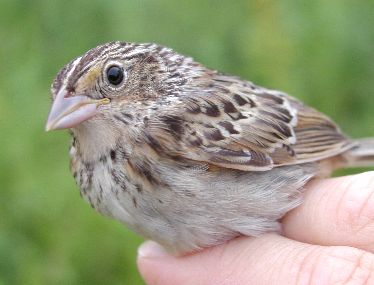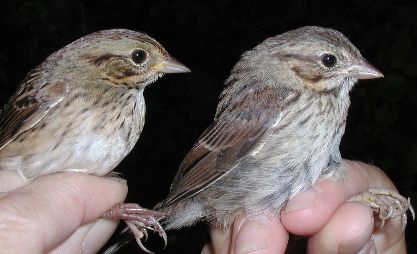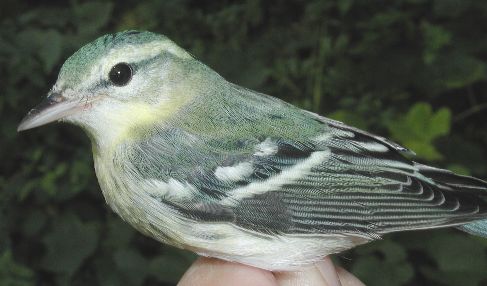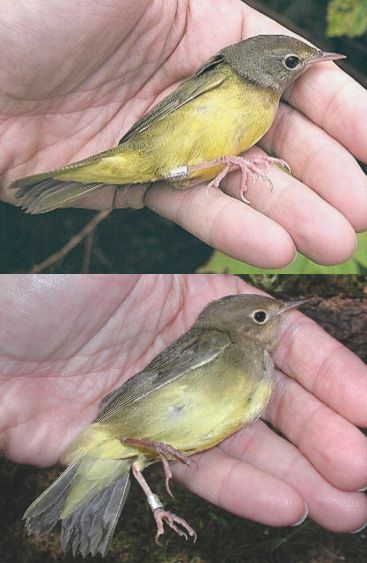

In the photo below, an immature (hatching year; HY) LISP is pictured alongside a juvenile SOSP. Fine streaking and a buffy wash over the streaked sides and breast of the LISP is generally distinctive, but SOSPs in juvenal plumage also show fine streaking and a have a variable yellowish to buffy tinge over their face and underparts. The thinner bill (like a Swamp Sparrow--see comparison photos of SOSP and SWSP from the week of 8/1 ), darker buff submoustachial stripe (the light area directly above the dark malar streak, which is the stripe that extends down from the corner of the bill), and a sharper contrast between the buffy sides and breast and the white chin and belly, serve to distinguish the LISP from juvenile SOSPs. Note, HY LISPs have an olive-gray supercilium (the broad light-colored stripe above the eye), whereas adults (after hatching year; AHY) have a cleaner gray supercilium (a similar difference exists between HY and AHY SWSPs in fall).


Lastly, we caught our second fall Connecticut Warbler (an immature female) this week. Pictures of the bird did not turn out as well as we hoped (in our experience, CONWs are another comparatively unphotogenic species), but we included one for comparison with an immature Mourning Warbler. The MOWA (top photo) shows the characteristic broken eye ring (especially at the front edge), while the CONW (bottom photo) has a complete eye ring. Note also the more extensive grayish olive hood on the CONW, which extends across and farther down along the sides of the breast than the MOWA. CONWs are somewhat larger than MOWAsand have proportionately much longer wings, although this is not particularly evident in our photos. Rest assured, we will keep trying for better photos of CONW this fall!

GO TO>> PAST PICTORIAL HIGHLIGHTS